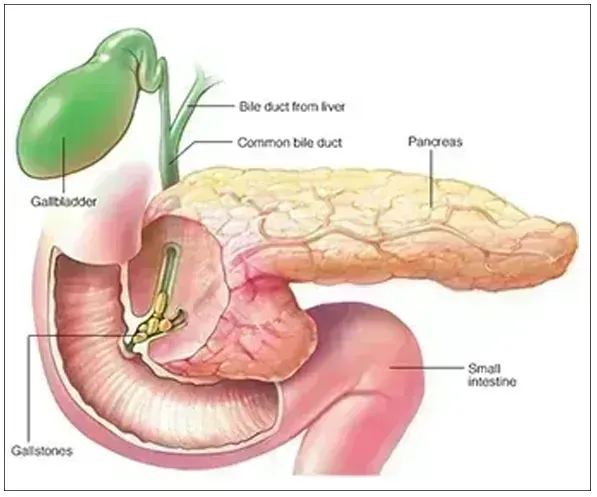

Pancreatic Diseases
Pancreatitis is an inflammation of the pancreas. It occurs when digestive enzymes become activated while still inside your pancreas, causing irritation and injury to pancreatic tissue and leading to inflammation.
In acute pancreatitis, inflammation develops quickly and then goes away after a few days to weeks. Your pancreas returns to normal once it has healed. The main causes are gallstones and long-term alcohol abuse. Repeated bouts of acute pancreatitis can lead to chronic pancreatitis.

Chronic pancreatitis is long-lasting inflammation in the pancreas. It can lead to the formation of scar tissue in the gland that keeps it from working properly. Long-term alcohol abuse is the main cause of chronic pancreatitis. If you smoke cigarettes, you are also at increased risk for the condition.
Hereditary pancreatitis is a genetic condition characterized by recurrent episodes of inflammation of the pancreas (pancreatitis). The pancreas produces enzymes that help digest food, and it also produces insulin, a hormone that controls blood sugar levels in the body. Episodes of pancreatitis can lead to permanent tissue damage and loss of pancreatic function.
Pancreatic cancer happens when normal cells in the pancreas change into abnormal cells and grow out of control. The pancreas is an organ that sits behind the stomach. It makes hormones and juices that help the body break down food.
Symptoms of pancreatic cancer can include:
These symptoms can also be caused by conditions that are not pancreatic cancer. But if you have these symptoms, tell your doctor or nurse about them.
Yes. If your doctor suspects you have pancreatic cancer, they will order one or more tests. These can include:
Cancer staging is a way in which doctors find out how far a cancer has spread.
The right treatment for you will depend a lot on the stage of your cancer. Your treatment will also depend on your age and other medical problems.
People with pancreatic cancer might be offered one or more of the following treatments:
Pancreatic cancer can sometimes be cured with treatment. This is most likely in people whose cancer is found at an early stage. Even if your pancreatic cancer cannot be cured, your doctor can treat your symptoms. For example, they can prescribe medicine or a procedure called a celiac plexus block to reduce your pain.
Following treatment, you will be checked every so often to see if the cancer comes back. Follow up tests usually include exams, blood tests, and imaging tests. If the cancer comes back after treatment, you might have chemotherapy, radiation therapy, or immunotherapy. You might also get pain medicine or other treatments to help with pain.